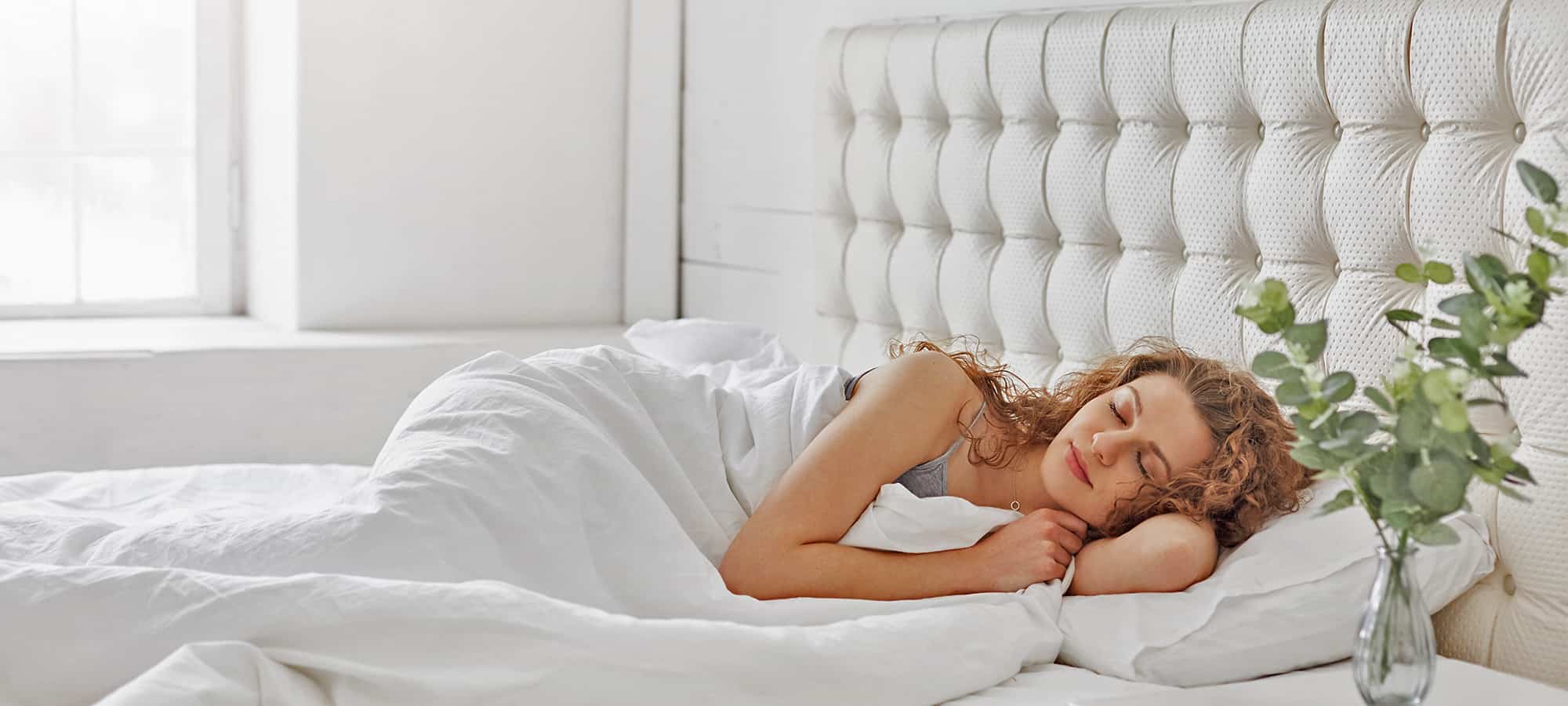Having a hard time drifting off? We asked certified sleep science coach Jane Wrigglesworth how to get a good night’s sleep and ensure our sleep hygiene is at it’s best. Read what she had to say below.
The Tips, Tricks and Science Behind Getting a Good Night’s Sleep
Pay attention to your morning and evening routines for a good night’s sleep, as a variety of different factors, some surprising, can impact not just how much we sleep but whether or not our quality of sleep is good.
Get plenty of natural light in the morning
Scientists have long known that bright light stimulates alertness and resets the body’s circadian rhythm. Without adequate light, the 24-hour body drifts, adding several minutes to its cycle each day. That means it will take you longer to get to sleep at night. If this continues – with very little or no light in the morning – your sleep time will drift later and later.
The light inside our homes doesn’t help. A brightly lit room measures around 300 lux (the middle of a room may be as low as 25 to 50 lux) with a standard office illumination about 500 lux, or lower. Compare that to the outdoors where illumination is between 10,000 lux in the morning and up to 100,000 lux for direct sunlight at noon.
Studies suggest exposure to morning light between 1000 and 2000 lux is enough to reset our circadian rhythm.
However, if you drive straight from home to the office, it’s unlikely you will be exposed to that much light.
A walk around the block or having breakfast outdoors will help, but that doesn’t always work during winter. Make it your business to get outside during your morning break at the very least, and again at lunchtime. If you still have trouble sleeping, you may wish to invest in a light box. A good light box produces between 7,000 and 10,000 lux and can be positioned on the table while you eat breakfast or at your workplace desk beside your computer.
Dim the lights in the evening
While light is good for you first thing in the morning, too much in the evening can cause a disruption to sleep. Managing your exposure to light at night is critical to ensuring the natural sleep-wake cycle functions as it should. The last thing many of us do before bed is stand in front of a bright light to brush our teeth. Or we check our emails or social media sites one last time.
To prevent stimulation, dim the lights a full hour, preferably two hours, before bedtime. If you do this routinely every night, along with a wind-down routine, it signals to your body that it should start preparing for sleep. Use a dimmer switch to control brightness or install low-wattage bulbs in table lamps and use those instead of your main lights. Stop using electronic gadgets at least an hour before bedtime as well.
Managing Sleep Issues Due to Stress and Anxiety
If you suffer from stress or anxiety, try an ambiance app on your phone with relaxing sounds or guided mediation (switch your phone to flight mode to stop WiFi signals, which have been shown to interrupt sleep).
Or, try a weighted blanket. Weighted blankets work well for people who have insomnia and a co-occurring mental health disorder, such as anxiety, depression, attention deficit hyperactivity disorder or bipolar disorder. It can also be beneficial for people with autism spectrum disorder and those with sensory processing disorder (SPD). The weight of the blanket mimics the feeling of being hugged, which can lead to a reduction in stress. That, in turn, can lead to better sleep.
In summary
Stick to a routine. Get up at the same time each morning and go to bed at the same time each night. A consistent routine (e.g. dinner, shower, lowering of lights, reading a book or using an ambiance app, applying a weighted blanket if suitable, then lights out) serves as a cue to your body that it’s nearly time to go to bed and decreases your body’s arousal level.
As with light in the morning and evening, mealtimes are environmental cues as well. Keep these consistent throughout the day, especially in the evening, as another cue in the lead up to lights out.
Learn more about the benefits of weighted blankets and try your own HERE.





